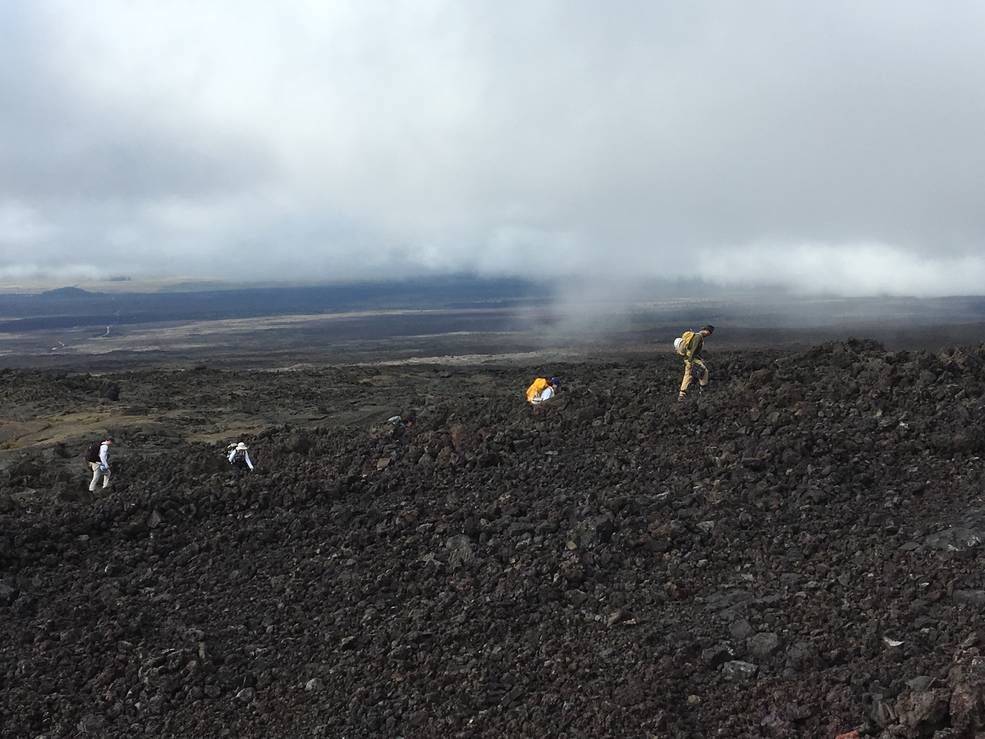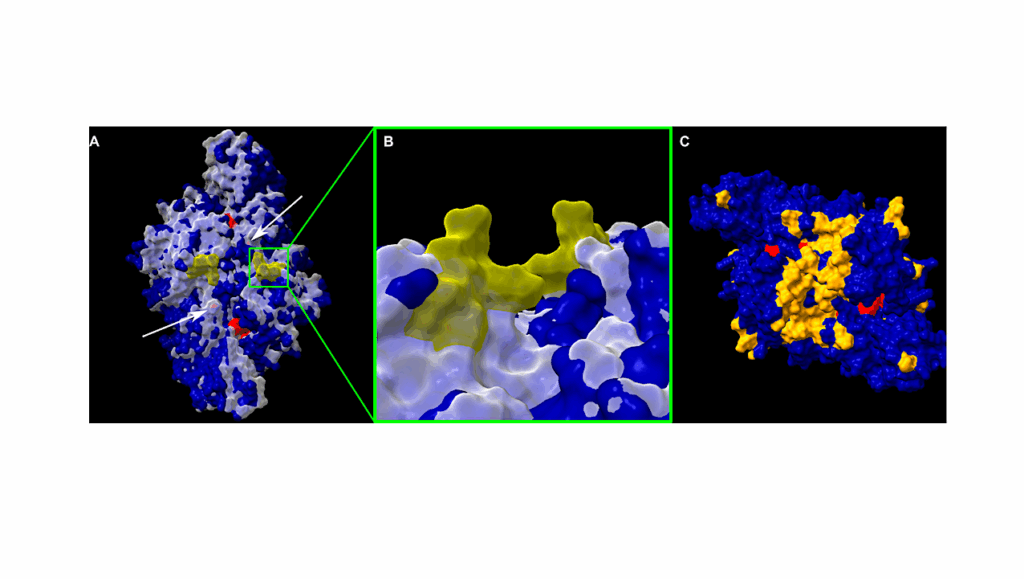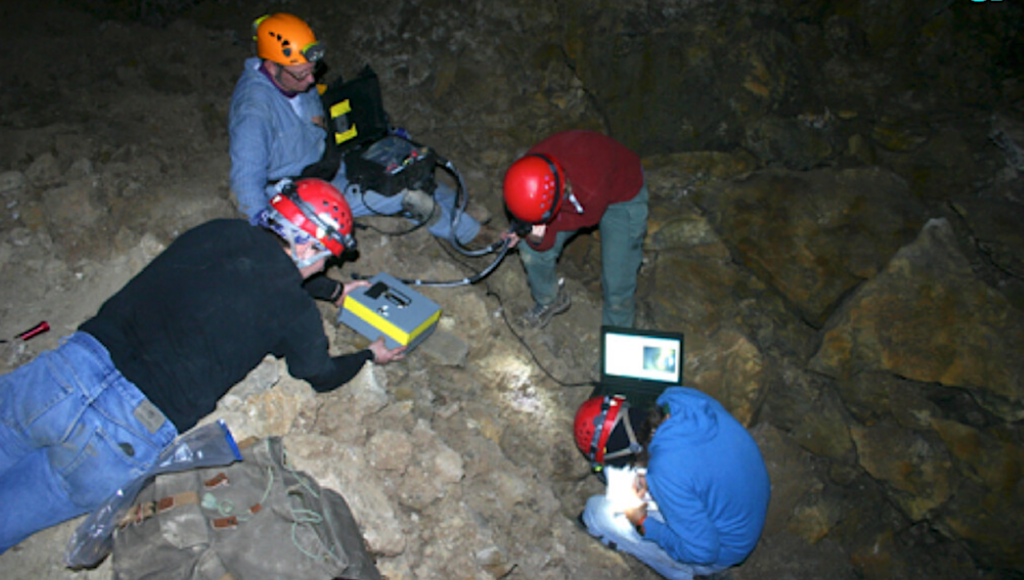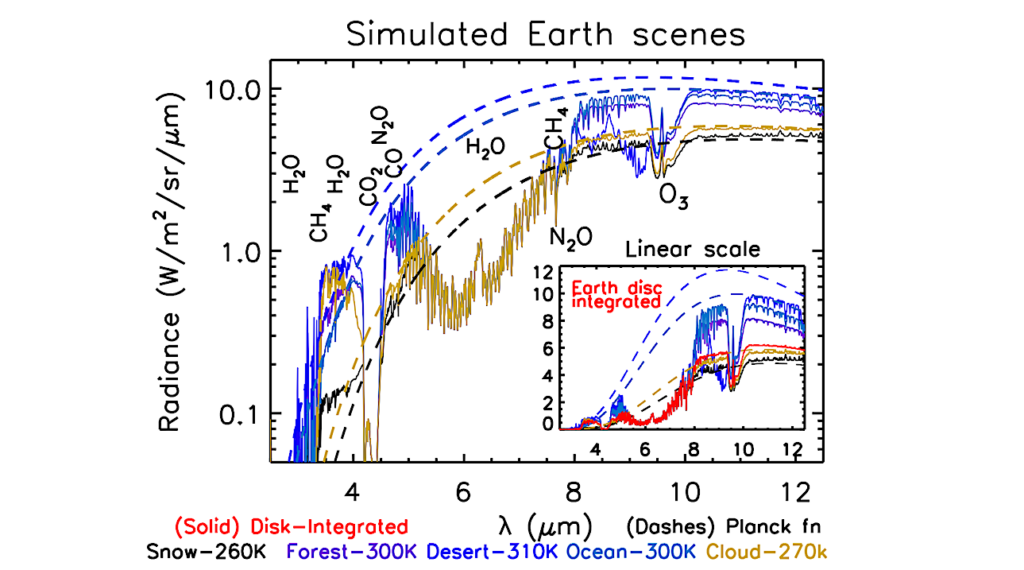Away Team Exploration Of Lava Caves Informs The Search For Life On Mars

In August 2019, Chloe Fishman crawled into a cave beneath the largest active volcano on the planet. Along with scientists from NASA and other institutions, she had come to Hawaii’s Mauna Loa volcano to study the microscopic life-forms that could survive underneath, in the dark and isolated subterranean environment known as a “lava tube.”
Fishman lowered herself 30 feet through an opening in the ground formed where part of the tube had collapsed. She was wearing a headlamp, gloves, and knee pads. As Fishman reached deeper into the darkness, she felt the temperature drop. The moisture in the air swallowed her. When her feet touched the cave floor, Fishman began to look around: “It felt like I had entered a different world,” she said.
She may as well have been on Mars. And that’s precisely why Fishman and her colleagues had come to Hawaii.
“The microbes we found in Hawaii could be similar to microbes that once lived on Mars, or even microbes that live there today,” said Fishman, who, at the time of this study, was an undergraduate researcher in the lab of Sarah Stewart Johnson, an associate professor at Georgetown University in Washington, D.C. Fishman now is a researcher at the Gladstone Institutes at the University of California, San Francisco.

Microbes thrived in the Mauna Loan lava tube, Fishman and her colleagues found, even in areas that received no sunlight, which most living things on Earth need to survive. In these dark areas, the microbes likely were using chemicals in the rocks for nourishment.
Fishman and her colleagues discovered dozens of previously unidentified species of microbes. They also gathered insights about their habitats that will inform strategies to one day collect samples in Martian lava tubes, the researchers reported on Feb. 17, 2023, in the Journal of Geophysical Research: Planets. Mars is one of NASA’s top destinations to search for signs of ancient or current micro-organisms, with several missions underway or being developed.
The lava tube Fishman and her colleagues studied, located on the northern flank of the volcano, formed about 200 years ago, qualifying it as “young” on the geologic time scale of billions of years. Less affected than older tubes by water and other weathering conditions, a young Hawaiian tube better resembles Martian lava tubes as they were billions of years ago.

When lava tubes first formed on Mars, the Red Planet was likely similar to Earth, with active volcanoes, an atmosphere, a warmer climate, and flowing water. Since these conditions helped nurture life on Earth, they may have done the same on Mars. Even though the Martian surface became inhospitable to living creatures after the planet shed its atmosphere, cooled, and dried up about 3 billion years ago, microbes could have migrated underground, scientists suspect.
Inside the Hawaiian lava tube, illuminated by headlamps, the walls were lit up in a mural of yellow, orange, pink, green, and white. These materials contained a range of minerals, including gypsum and calcite, arranged in shapes that reminded Fishman of mushrooms and popcorn. While Fishman had come to the cave to scrape flakes from the to bring back to the lab to look for microbial life, most of her colleagues had come to study the minerals. The mineral work is ongoing, but it will intersect with Fishman’s if some of the minerals turn out to be more likely than others to host microbes. Insight from this research could help Martian rovers pinpoint promising sites to sample for signs of past or present life.

“We have identified minerals similar to those found at Mauna Loa on the Martian surface and right below it,” said Amy McAdam, a geochemist at NASA’s Goddard Space Flight Center in Greenbelt, Maryland. McAdam is a member of the science team behind NASA’s Curiosity rover, which is exploring Mars, and also analyzing samples plucked from the surface in its onboard chemistry lab.
“Even if it’s difficult to tease out signs of life in Martian minerals, we can still learn a lot from them about the environmental conditions of early Mars and whether those conditions were friendly to life or not,” McAdam said.
After a week of work in the lava tube, Fishman brought back about 20 half-teaspoon-size samples to Johnson’s lab. She poured each one into a test tube filled with liquid and glass beads the size of sand grains. A device in the lab shook them to break apart the samples, thereby releasing cells into the liquid. This allowed Fishman to extract DNA from the cells. Sequencing the DNA revealed the genetic codes for the organisms.
Fishman has sequenced the genomes of 72 new organisms. So far, she has analyzed the genomes of two microbes, which allowed her to classify them based on their characteristics and to add them to global databases.
Associated papers
Extreme Niche Partitioning and Microbial Dark Matter in a Mauna Loa Lava Tube, JGR Planets
Metagenome-Assembled Genome of a Putative Chemoheterotroph from Volcanic Terrain in Hawaii, ASM (open source)
Basaltic Lava Tube Hosts a Putative Novel Genus in the Family Solirubrobacteraceae, ASM (open source)
Astrobiology








